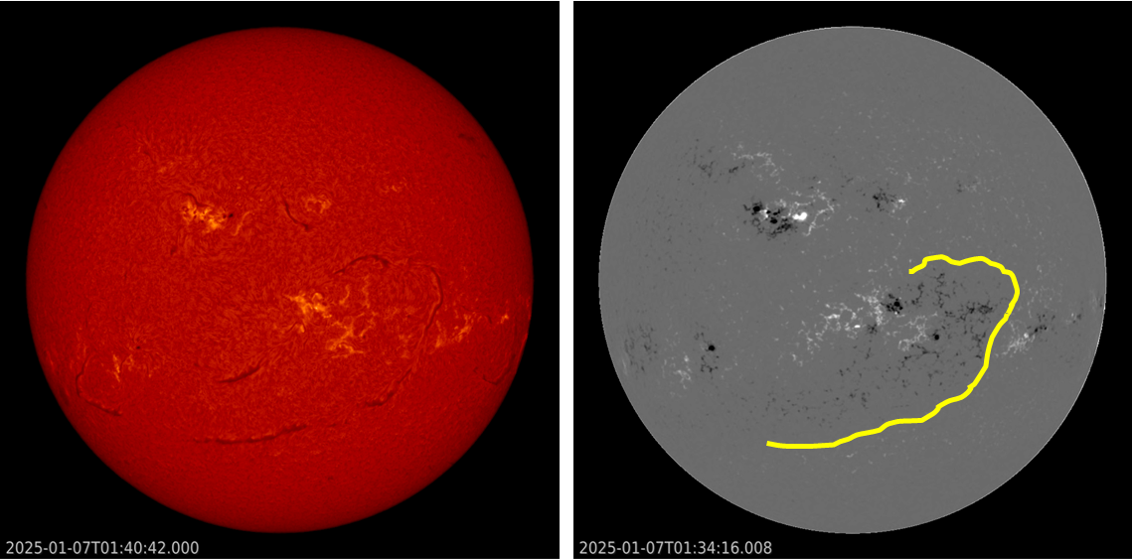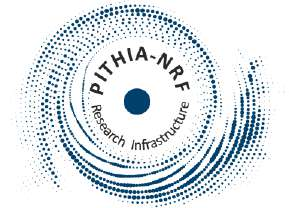Solar prominences are clouds of charged particles ("plasma") above the solar surface squeezed between regions of opposite magnetic polarity. Being cooler and denser than the plasma underneath and their surroundings, they appear as bright blobs when seen near the solar limb and as dark lines when seen on the solar disk (then they are called "filaments"). Special filters are required to observe these features, such as in the Hydrogen-alpha (H-alpha) line in the red part of the solar spectrum (656,28 nm), or in some extreme ultraviolet (EUV) passbands such as GOES/SUVI 195. Filaments are structures that only survive by the stability of the surrounding magnetic fields. Hence, longer filaments (from about 20 degrees in length onwards) are prone to erupt. Indeed, as the magnetic regions suspending the filament may become unstable, the filament can erupt and throw a cloud of ionized particles towards the Earth where it can cause geomagnetic disturbances. These eruptions are more likely to occur as the filament grows longer, typically around 200.000 km. Such long filaments usually develop outside sunspot groups.

The above imagery (GONG) shows the Sun's chromosphere ("inner atmosphere" ; left, with off-disk features removed) and the corresponding magnetogram (right) on 7 January. The magnetogram has the outline of the filament added in yellow, such that one can see how this structure meanders between the magnetic fields of opposite polarity. Note black is "negative" polarity, with field lines returning into the Sun, while white is "positive" polarity with field lines pointing away from the Sun. While it was transiting the central meridian, the filament's length varied between 1.2 million and 1.4 million km. Such long filaments are not uncommon, with various discussed in previous STCE newsitems (here, here, and here). The H-alpha images (GONG) underneath show the evolution of the filament on 2, 5 and 8 January. The clip covers the period from 29 December to 13 January. It is a bit shaky because it is compiled from up to 6 stations worldwide, and some of the imagery is affected by passing clouds. The filament is so long it takes 4 (four!) days to fully round the Sun's west limb. Curious to see if this filament will survive the Sun's far side transit.







